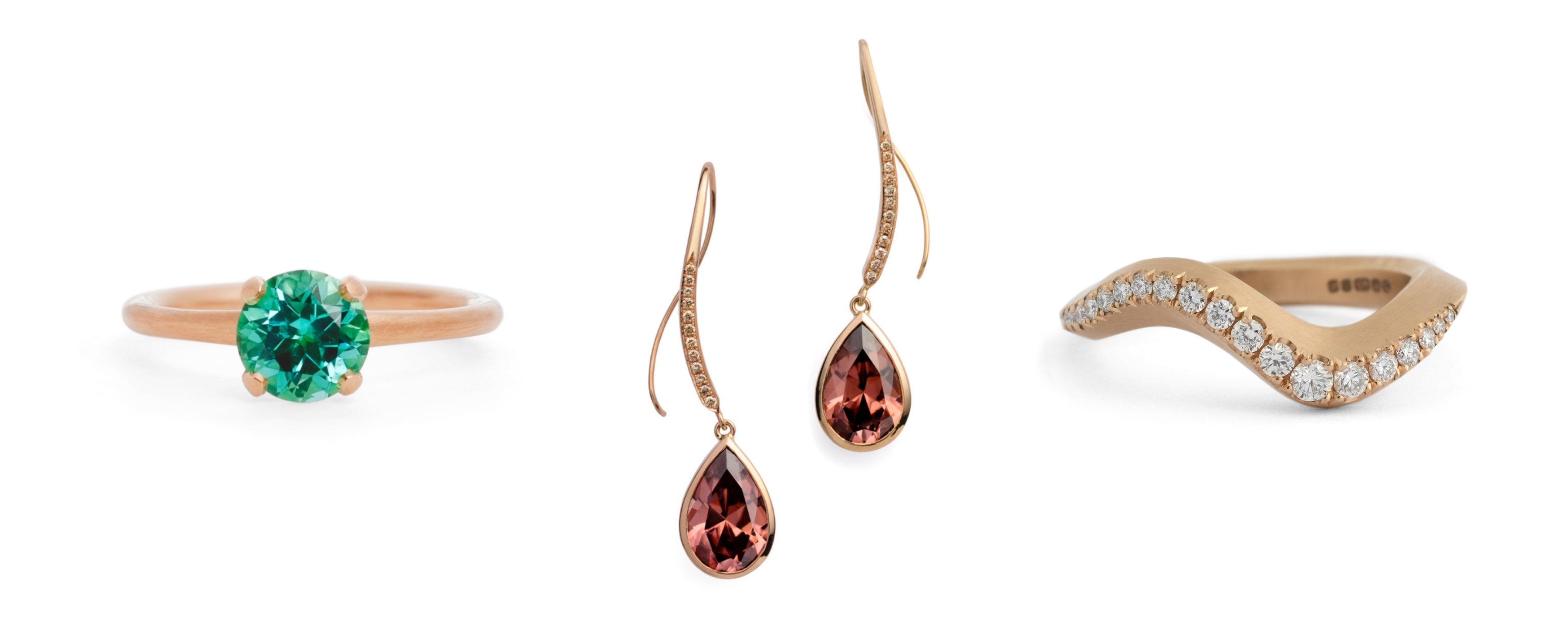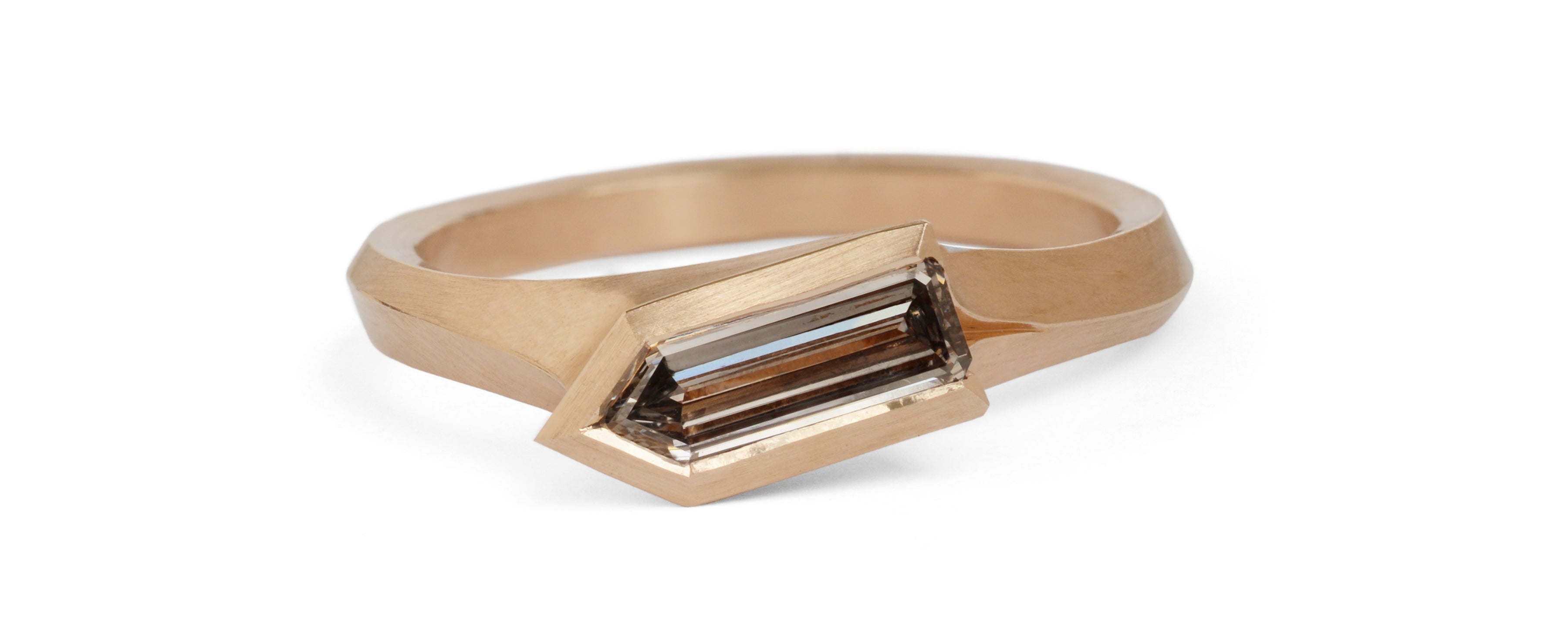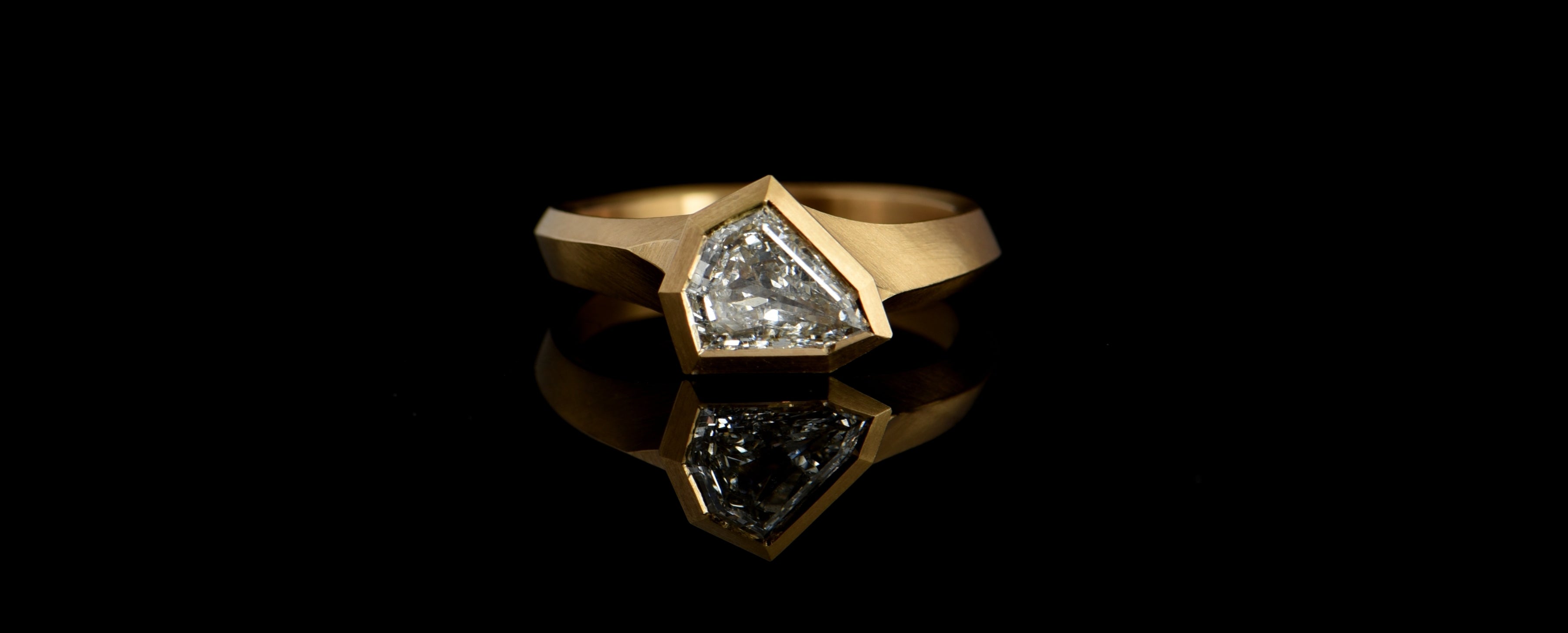
Setting types explained
So you have decided to commission a bespoke piece of jewellery for the special occasion coming up in your life and that is wonderful! There are so many decisions to make in this process and we want to make your options as crystal clear for you as possible.
When it comes to the setting of your chosen stone or stones, it can all feel a bit mysterious and overwhelming. Fear not, as we are only too happy to explain. There are 6 main ways for stones to be set; Bezel, Castelle, Pavé, Gypsy, Claw and Channel. Most people will have heard of claw settings, however the names of the other types may be entirely new to you. Not all stones can be set in all of the above setting types due to size, placement and durability, but keep reading if you would like to know the differences. We will advise all of our customers on what setting is best for the piece they want to have created or the type of stone they are looking for.
Before getting into explaining the different settings though, the anatomy of a stone requires explaining. Below is an image of a stone which explains what each part is called.

When it comes to setting any stone, the overall height of the stone and the proportions of the girdle are the first two things that an experienced setter looks at. The metal that will hold the stone in place needs to hug the stone, just over the girdle, around the crown. The culet, or the tip of the stone, also needs protecting, so the setting needs to be deep enough that the culet does not stick out of the back of the piece and either run the risk of being damaged or scratching you.
Bezel Setting
Bezel setting is one of the safest ways to have a stone set. This process is done by setting the stone down into a “seat” and having the metal pushed around the crown of the stone. This type of setting can be seen in our Arris and Aegis collections. This is an excellent way to set a large stone and although it usually covers the entire girdle of the stone, it can make your stone look even bigger than it is due to the bright cut on the edge of the metal.
Arris carved rose gold ring with emerald-cut mint tourmaline
Not all bezel settings necessarily have to entirely cover the girdle of the stone. Below is an example of another of our Arris rings with an open bezel. The stunning 0.72ct grey diamond has a majority bezel setting, holding it in place. Bezel settings are generally chosen for their protection, however as diamonds are the strongest stone known to man, they can have an “open” setting. This allows plenty of light to travel through the stone and let it sparkle to its fullest potential.
Hand carved rose gold Arris ring with grey diamond
Castelle Setting
Castelle or ‘castle’ setting is named for its distinctive scalloped effect, which looks similar to crenellated castle walls. In castelle setting, stones are set at the edge of a surface with small beads of metal, leaving no metal on either of the outside edges, differentiating Castelle from pavé. The metal is cut away in both a purposeful and decorative fashion. Castelle setting looks fantastic on an elegant eternity band.
Arris carved ring with castelle diamonds
Pavé Setting
Pavé setting, as seen in the ring below, is a technique designed for setting stones across surfaces while keeping a metal border between the stones and the edge of the surface. Stones are set into the surface with 3 or more beads of metal. A line is then engraved around the stone, called a bright cut. This serves as a shiny reflection to enhance the stones, as well as cleaning up the precious metal from when the beads were created.
18 carat gold pave diamond ring
Pavé is excellent for adding a touch more sparkle to any piece. The Tsavorite Garnet earrings below would be beautiful without the white diamonds, but the addition of the pavé set diamonds elevated these elegant earrings and adds a dazzling effect when worn.
Forged gold tsavorite garnet and diamond drop earrings
Gypsy Setting
Gypsy setting is a technique used for small stones that want to be seen individually. Like pavé and castelle setting, this technique is designed for setting stones on the surface of metal, however no beads are created. Instead, a setter will drill a hole into the precious metal and using several different types of drill bits, or “burrs”, they will create a seat to fit the exact measurements of each individual stone. The stone is then pushed straight down into the metal, making a very satisfying “pop” sound. The precious metal is then smoothed over the stone to make sure it is safe and secure. Below is an image of a beautiful Paraiba Tourmaline bezel set in platinum, with five crisp, white diamonds gypsy set beside the tourmaline. As a considerable amount of pressure needs to be put on the stones to push them down into the metal, strong stones such as diamonds are recommended for this setting.
Carved platinum and Paraiba tourmaline cocktail ring with white diamonds
Claw Setting
Claw or ‘prong’ settings creates a classic, solitaire silhouette. Most people know exactly what this looks like and can picture it in their heads easily but we have an image below so you don’t have to! The claws, much like the beads of pave and castelle setting, hold the stone snugly in place. Our 4 claw rings are carved in wax and later cast into metal, and as such are more substantial than most 4 claw rings out there.
Sculpted 18ct rose gold 4 claw ring with paraiba tourmaline
The claw itself can be altered to be rounded or pointed, the latter sometimes called "talon claws". The rounded version of our 4 claw ring is designed to work in harmony with our curvaceous collections and the round profile of the ring shank. The talon version of our 4 claw ring gives an architectural feel to the geometric lines and squared edges of the ring shank created in this ring.
Platinum four claw talon engagement ring with oval white diamond
Channel Setting
Finally there is channel setting. This is created by using burrs to make a channel for stones to sit into. Once the stones are placed into the channel, metal is pushed over the top of them to keep them in place. Although in a lot of channel setting it looks as though the stones are touching, they are not as stones could damage each other if they are constantly rubbing off each other. Below is a picture of a mint green tourmaline bezel set Arris ring (left) and a zircon bezel set Arris ring (right), both incorporating channel setting in slightly different ways. The tourmaline ring has a bright cut in a curved shape around the top of the channel set diamonds. The zircon ring has a bright cut that is straight on the top of the channel set diamond.
Mint green tourmaline, diamond and rose gold carved ring
Carved 18ct rose gold and zircon cocktail ring with white diamonds
That’s a lot of information for one journal entry! If you’ve read this far, we hope everything has made sense to you. If it hasn’t, that’s ok, we can explain things more easily if you pop into our London or Dublin Ateliers. We can show you examples of the different types of settings in person. If you're unable to come into one of our Ateliers, we can always help by email or over the phone too. We will always advise you on the best decision you can make for the piece of jewellery you want and you can enjoy the finished product. If you would like to call into us, click the link below to make an appointment and we can talk all things setting!










